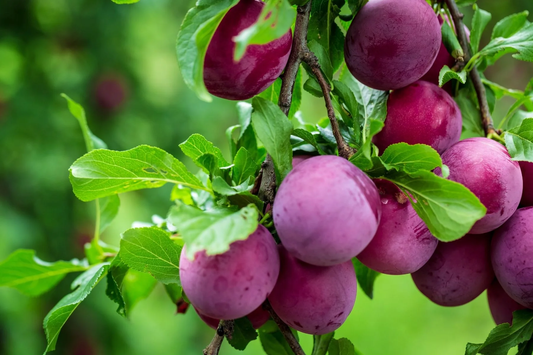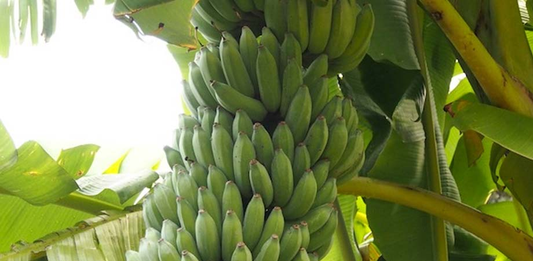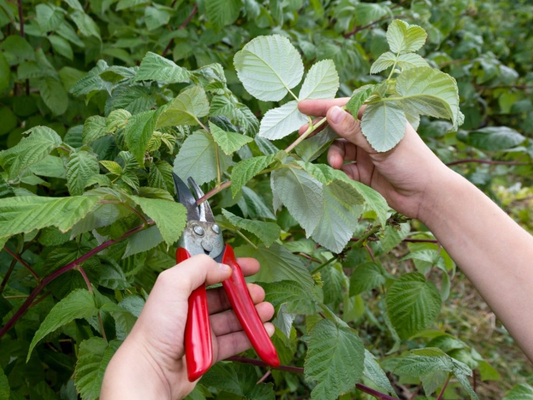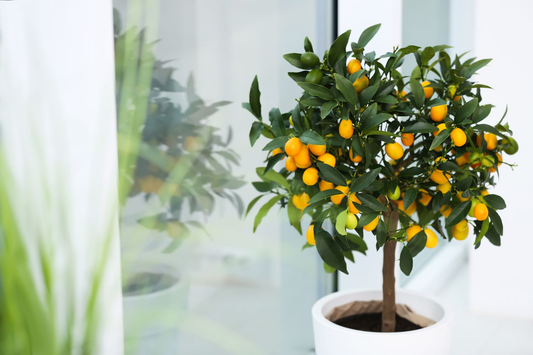The Best Containers for Herb Gardening That Professional Chefs Swear By
Share
Table of Contents
1. Introduction
Herb gardening has become an increasingly popular hobby, especially among professional chefs. Whether it's for enhancing the flavor of a dish, adding a decorative touch to a meal, or creating a delightful aroma in the kitchen, fresh herbs are a staple in many culinary creations. However, growing herbs successfully requires more than just seeds and water. One of the most crucial factors in herb gardening is selecting the right container to ensure healthy growth. The container you choose plays a significant role in providing the necessary conditions for your herbs to thrive, affecting everything from soil drainage to root health.
Professional chefs understand the value of fresh, homegrown herbs. By growing their own herbs, chefs can ensure they always have access to top-quality, flavorful ingredients that elevate their dishes. Fresh herbs not only contribute rich flavors but also add visual appeal, making them essential in both savory and sweet dishes. As chefs continue to embrace the concept of growing their own herbs, it's essential to choose the right container that allows for optimal growth and easy access to these culinary essentials.
In this guide, we'll explore why container gardening is ideal for growing herbs, what to look for when selecting the best container, and how chefs can maximize their herb garden's potential. Here’s what we’ll cover:
- Understanding the benefits of container gardening for herbs
- Choosing the right container to promote healthy growth
- Insights from professional chefs on their preferred herb containers
- Tips for maintaining a thriving herb garden in any space
By the end of this guide, you'll be equipped with the knowledge to grow your own fresh herbs like a professional chef!

2. Why Container Gardening for Herbs?
Container gardening offers several advantages for growing herbs, making it a preferred method for both home gardeners and professional chefs. Below are the key benefits of growing herbs in containers:
- Space-saving: Growing herbs in containers is ideal for small spaces. Whether you have a tiny apartment, a balcony, or a small garden, containers allow you to grow herbs without taking up too much room. You can use windowsills, countertops, or even vertical planters to maximize available space.
- Flexibility in placement (indoor/outdoor): One of the best features of container gardening is the flexibility it offers. You can place your herbs indoors, on a sunny windowsill, or outdoors on a balcony or patio. This flexibility means you can optimize growing conditions based on the season and weather, ensuring your herbs thrive year-round.
- Mobility for optimal sunlight: Container gardening allows you to move your herbs to the best spots for sunlight. Herbs need plenty of light to grow well, and with containers, you can easily adjust their placement to follow the sun throughout the day. This is especially helpful during cloudy days or seasons with less sunlight.
Additionally, containers provide greater control over soil and water conditions. Unlike in-ground gardening, where soil quality can vary, containers allow you to choose the ideal potting mix and maintain consistent moisture levels. This helps prevent issues such as waterlogging or soil compaction, leading to healthier, more productive herbs.
3. Key Considerations When Choosing Herb Containers
When selecting the right container for growing herbs, several important factors must be considered. Each of these factors can affect the health and growth of your herbs, so it’s crucial to make an informed decision. Below are the key considerations to keep in mind:
- Drainage: Proper drainage is vital for the health of herb roots. Without adequate drainage, excess water can accumulate in the bottom of the container, leading to root rot and other issues. Ensure that the container has drainage holes or consider adding a layer of gravel at the bottom to promote water flow.
- Size: The size of the container directly influences the growth and yields of your herbs. A container that is too small will restrict root development, leading to stunted growth. On the other hand, a container that is too large can result in excess soil moisture retention, which can drown the roots. Choose a container that provides enough space for the herb’s root system to grow and spread.
-
Material: Different materials offer distinct advantages and disadvantages for herb containers. Here's a quick comparison:
Material Pros Cons Plastic Lightweight, affordable, retains moisture Can overheat in direct sunlight, less aesthetic appeal Clay/Terracotta Breathable, ideal for dry climates, attractive Heavy, prone to cracking in cold weather Ceramic Decorative, durable, retains moisture Heavy, expensive Metal Modern look, durable, long-lasting Can overheat, poor insulation - Aesthetic appeal: The style of the container can enhance the décor of your kitchen or garden. From rustic terracotta pots to sleek, modern metal containers, the appearance of your herb garden can complement your space. Choose a container that fits your aesthetic preferences while still meeting the functional needs of the plant.
- Insulation: The material of your container can impact temperature regulation, especially if you’re growing herbs outdoors. Some materials, like ceramic and clay, are better at insulating plants, protecting them from extreme temperature fluctuations. Metal containers, however, can heat up quickly in the sun, potentially stressing the herbs during hot weather.

4. Top Materials for Herb Containers
Choosing the right material for your herb containers is essential for ensuring your plants grow in optimal conditions. Below, we will explore some of the most popular materials for herb containers, outlining their advantages and disadvantages to help you make an informed decision.
Plastic Containers
Pros:
- Lightweight, making them easy to move around.
- Affordable, making them a budget-friendly option.
- Retains moisture well, reducing the frequency of watering.
Cons:
- Can overheat in hot weather, which may stress the plants.
- Less aesthetic appeal compared to other materials like clay or ceramic.
Clay and Terracotta Containers
Pros:
- Breathable material, which helps prevent overwatering by allowing moisture to evaporate from the sides.
- Ideal for dry climates as they help regulate moisture levels.
- Aesthetically appealing, giving a classic and rustic look to any garden or kitchen.
Cons:
- Heavy, making them difficult to move around, especially when filled with soil.
- Prone to cracking in cold weather or if exposed to freezing temperatures.
Ceramic Pots
Pros:
- Highly decorative, perfect for enhancing indoor spaces.
- Durable and long-lasting when properly cared for.
- Great for indoor herbs, providing an elegant and functional solution for kitchen windowsills.
Cons:
- Can be heavy, making it challenging to move once filled with soil and herbs.
- Expensive compared to other container options, which may not suit all budgets.
Metal Containers
Pros:
- Highly durable and long-lasting, often lasting many years if well-maintained.
- Provides a modern, sleek look, adding a contemporary touch to outdoor or indoor spaces.
Cons:
- Can heat up quickly in direct sunlight, which may damage plants in hot weather.
- Poor insulation properties, making them less ideal for maintaining stable soil temperatures.
Self-Watering Containers
Pros:
- Convenient for busy gardeners as they reduce the frequency of watering.
- Helps maintain consistent moisture levels, which is essential for herb growth.
Cons:
- Can be more expensive compared to traditional containers.
- If not properly used, they may encourage root rot due to excess moisture buildup in the bottom of the container.
5. Best Container Options for Different Herb Types
Different types of herbs have varying root systems and growth habits, which means that choosing the right container size and shape is essential for their health and productivity. Below are the best container options based on the type of herb you're growing:
Leafy Herbs (e.g., basil, parsley, cilantro)
Leafy herbs tend to have shallow root systems that spread outward rather than downward. For these herbs, a container that is both shallow and wide is ideal. Here's why:
- Shallow containers: Leafy herbs do not require deep soil to grow, as their roots spread across the surface.
- Wide containers: These provide more surface area for the roots to spread out, ensuring that the plants have room to grow without becoming root-bound.
- Size recommendation: A container that is 6-8 inches deep with a diameter of at least 12 inches is usually sufficient for most leafy herbs.
Woody Herbs (e.g., rosemary, thyme, oregano)
Woody herbs, such as rosemary, thyme, and oregano, generally have more robust root systems and require more space for growth. These herbs are also typically more stable in larger containers, which help prevent them from tipping over. Here’s what to consider:
- Larger containers: Woody herbs need more room for their roots to develop deeply and establish themselves. This helps them grow stronger and more stable.
- Container depth: A container that is at least 12 inches deep is ideal for woody herbs, allowing for proper root growth.
- Size recommendation: Containers with a diameter of 14-18 inches will give your woody herbs enough space to grow properly.
Root Herbs (e.g., ginger, garlic, turmeric)
Root herbs, such as ginger, garlic, and turmeric, require deep containers to accommodate their extensive underground root systems. Here's why:
- Deep containers: These herbs grow their roots downward, so a deeper container is needed to provide enough space for them to spread.
- Proper drainage: Root herbs also require good drainage to prevent water from accumulating at the bottom of the container, which could lead to rot.
- Size recommendation: Containers that are 12-18 inches deep are ideal for root herbs, providing ample space for root development.
Annual vs. Perennial Herbs: Which Types Need Larger Pots and Why
Annual and perennial herbs have different growth cycles and needs. Generally, perennial herbs tend to need larger containers due to their longer life span and need for more root space:
- Perennial herbs: These herbs, which live for multiple seasons, require larger containers to allow their root systems to grow and spread over the years. Larger pots also help ensure that they have enough space to thrive year after year.
- Annual herbs: Annual herbs, which complete their life cycle in one growing season, can thrive in smaller containers, as their roots do not need as much space for long-term growth.
- Size recommendations: For perennials, opt for containers that are at least 12-18 inches in diameter. For annuals, smaller containers around 8-12 inches in diameter will suffice.

6. How to Choose the Right Container Based on Your Space
Choosing the right container for your herbs not only depends on the type of herb but also on the space available to you. Whether you're working with limited urban space or have an expansive outdoor garden, there are container options to fit every situation. Below are some tips on selecting the best containers based on your space:
Urban Spaces: Small or Hanging Containers for Apartment Living
Urban living often means limited space, but you can still grow a variety of herbs in small, compact containers. Here are some options:
- Small containers: Opt for small pots or trays, which are ideal for growing a few herbs at a time. These can fit on windowsills, countertops, or even hanging shelves.
- Hanging containers: Consider using hanging baskets or wall-mounted planters to save space while still having easy access to fresh herbs.
- Size recommendation: For apartment living, containers with a diameter of 6-8 inches are perfect for small herbs like basil, parsley, and cilantro.
Kitchen Windowsills: Small Pots with Easy Access
The kitchen windowsill is one of the best spots for growing herbs because it offers easy access while cooking. Here’s what you can do:
- Small pots: Choose compact containers that fit comfortably on your windowsill without taking up too much space.
- Size recommendation: Containers that are 4-6 inches deep with a diameter of around 6-8 inches are ideal for herbs like chives, thyme, and oregano.
Outdoor Gardens: Larger Containers or Raised Garden Beds
If you have more space in your backyard or outdoor garden, you can go for larger containers or raised garden beds to accommodate your herbs:
- Larger containers: Opt for containers with a diameter of at least 12 inches to allow herbs to grow well and develop healthy root systems.
- Raised garden beds: Raised beds offer better drainage and soil control, providing ample space for multiple herbs to grow.
Balconies and Patios: Using Vertical Garden Systems or Window Boxes
Balconies and patios provide opportunities for creative container gardening. Here’s how you can make the most of your space:
- Vertical garden systems: These are perfect for small spaces as they allow you to grow herbs vertically, saving horizontal space.
- Window boxes: Install window boxes on railings or along your balcony to grow a variety of herbs while maintaining easy access.
- Size recommendation: Vertical systems and window boxes should be deep enough to hold soil and allow for proper root growth, typically 8-12 inches deep.
7. Professional Chef's Favorite Containers for Herbs
Professional chefs understand the value of fresh, flavorful herbs, and they know that the right container can make a big difference in their kitchens and gardens. Below are insights from chefs on their preferred container types, focusing on practical, efficient, and stylish options for growing herbs:
Practical Containers Used by Chefs
Chefs often prioritize containers that are both functional and easy to manage in fast-paced kitchen environments. Here are some of their favorite container types:
- Self-watering containers: Many chefs love self-watering containers because they reduce the frequency of watering, which is crucial during a busy day in the kitchen. These containers ensure that herbs remain hydrated without the risk of overwatering.
- Stackable and modular containers: For kitchens with limited counter space, stackable containers or modular systems are popular. These allow chefs to grow multiple herbs in a small footprint, maximizing space.
- Clay and Terracotta pots: Despite being heavier, chefs who have dedicated kitchen herb gardens often use terracotta pots for their breathability and rustic appeal. These pots are particularly favored for herbs like rosemary, thyme, and oregano.
Designer and Well-Known Brands Favored by Chefs
While practicality is key, many chefs also choose high-quality, designer containers to enhance the aesthetic appeal of their kitchen or herb garden. Some renowned brands include:
- Lechuza: This brand is well-known for its high-end self-watering planters. Chefs appreciate the sleek, modern look of Lechuza containers, which are perfect for growing herbs like basil and mint.
- Fermob: Popular for its colorful and stylish garden planters, Fermob containers are frequently chosen by chefs who want to add a touch of elegance to their outdoor herb gardens.
- Haws: Known for its traditional watering cans, Haws also offers stylish, durable containers that are favored by chefs for their simplicity and functionality.
Chefs’ Tips for Choosing Containers
- Mobility: Many chefs prefer containers that are lightweight and easy to move, especially for outdoor gardens where sunlight and weather conditions can vary.
- Durability: Chefs also recommend containers that can withstand frequent use and last for many seasons, making high-quality materials like ceramic, terracotta, and metal popular choices.

8. Maintaining Your Herb Containers
Proper care and maintenance are essential to ensure your herbs thrive in containers. By following the right practices, you can enjoy healthy, flavorful herbs throughout the year. Below are key aspects to consider when maintaining your herb containers:
Watering: How to Properly Water Herbs in Containers
Herbs in containers require consistent watering, but it’s crucial to avoid overwatering. Here’s how to water your herbs properly:
- Water deeply: Ensure the water reaches the entire root system. Water until it begins to drain from the bottom of the pot.
- Check soil moisture: Before watering, check the top inch of soil. If it feels dry, it’s time to water; if it’s still moist, wait a day or two.
- Avoid soggy soil: Make sure your containers have proper drainage holes to prevent waterlogging, which can lead to root rot.
Fertilizing: Best Practices for Feeding Herbs Grown in Pots
Herbs in containers require regular feeding to maintain healthy growth. Follow these best practices:
- Use a balanced fertilizer: Opt for a slow-release, organic fertilizer to avoid overfeeding your herbs.
- Fertilize every 4-6 weeks: Apply fertilizer during the growing season (spring and summer) to encourage robust growth.
- Less is more: Herbs generally prefer lean soil, so avoid over-fertilizing, as this can result in excessive foliage growth with less flavor.
Pruning and Harvesting: How to Maintain Healthy Plants in Containers
Pruning and harvesting herbs regularly not only helps maintain their shape but also encourages new growth. Here's how to do it:
- Harvest frequently: Trim leaves regularly to prevent herbs from becoming too leggy. Always snip leaves from the top to encourage bushier growth.
- Prune dead or yellowing leaves: Remove any dead or damaged leaves to keep the plant healthy and promote better airflow around the roots.
Seasonal Care: What to Do in Different Seasons (Indoor vs. Outdoor Care)
Seasonal changes affect how you care for your herbs in containers. Here are some tips for year-round maintenance:
- In spring and summer (outdoor care): Place your herbs in containers in a location that receives plenty of sunlight (6-8 hours a day). Water more frequently during hot weather.
- In fall and winter (indoor care): Bring your herbs indoors or protect them from frost. Keep them in a sunny window and reduce watering to prevent root rot.
- Protect against extreme temperatures: Move containers into shaded areas during heatwaves and indoors during cold snaps to prevent damage from temperature extremes.
9. Container Gardening Mistakes to Avoid
While container gardening is a great way to grow herbs, it's important to avoid common mistakes that can hinder plant growth. Below are some of the most common errors to watch out for and how to fix them:
Overwatering: How to Recognize and Fix It
Overwatering is one of the most frequent mistakes in container herb gardening. Here's how to recognize and correct it:
- Signs of overwatering: Yellowing leaves, wilting, and soggy soil are signs of overwatering.
- Fixing overwatering: Ensure the container has proper drainage, and allow the soil to dry out before watering again. Avoid watering if the top inch of soil is still moist.
Underwatering: Signs Your Herbs Need More Moisture
Underwatering is another common problem. Here's how to spot it:
- Signs of underwatering: Dry, brittle leaves, and soil that is hard and cracked indicate that your herbs are not getting enough water.
- Fixing underwatering: Water your herbs thoroughly, ensuring the water reaches the root zone. Be consistent with your watering schedule, especially during hot weather.
Poor Drainage: How to Ensure Pots Have Proper Drainage and Prevent Root Rot
Proper drainage is essential for healthy herb growth. Without it, your herbs are at risk of root rot:
- Signs of poor drainage: Waterlogged soil and the smell of decay around the roots are common indicators of poor drainage.
- Fixing poor drainage: Ensure your container has drainage holes. If using decorative containers without holes, consider placing a smaller pot inside or using gravel at the bottom to allow water to escape.
Choosing the Wrong Size Container: How It Impacts Growth
Choosing the right size container is crucial for healthy herb growth. Here's what happens if you choose the wrong size:
- Too small: A container that’s too small can restrict root growth and stunt the plant's development.
- Too large: A container that’s too big can lead to overwatering and root rot, as the soil takes longer to dry out.
- Fixing container size issues: Choose a container that allows enough room for the herb's roots to spread comfortably, but isn’t excessively large.
10. Alternative Herb Container Ideas for the Creative Gardener
If you’re looking for unique and eco-friendly ways to grow herbs, there are plenty of creative alternatives to traditional containers. Here are some innovative ideas for the creative gardener:
Upcycling: Turning Old Kitchen Items into Herb Containers
Upcycling is a fun and sustainable way to repurpose old kitchen items as herb containers. Here are a few ideas:
- Mason Jars: These are perfect for growing small herbs like basil or mint. Simply add soil, plant your herb, and place the jar in a sunny spot.
- Teacups: Repurpose unused teacups into charming herb containers. These work well for small herbs like thyme or rosemary.
- Tin Cans: Old tin cans make rustic, stylish herb containers. Just be sure to drill holes in the bottom for drainage.
DIY Planters: Step-by-Step Instructions for Creating Your Own Containers
If you love DIY projects, making your own herb containers can be a rewarding and personal touch. Here’s a simple guide to create your own planters:
- Choose Your Materials: You can use wood, concrete, or plastic to build custom containers.
- Prepare the Base: For wooden planters, create a box-like structure and ensure the base is solid and has drainage holes. For concrete, mix the materials and mold them into desired shapes.
- Drill Drainage Holes: Be sure to drill holes in the bottom for water to escape, preventing root rot.
- Decorate Your Planter: Add paint, mosaic tiles, or fabric to give it a personalized look.
- Plant Your Herbs: Once your planter is ready, fill it with soil and plant your favorite herbs!
Vertical Gardens: How to Use Wall-Mounted or Hanging Planters for Herbs
If you're working with limited space, vertical gardens are an excellent option. Here’s how to use wall-mounted or hanging planters for growing herbs:
- Wall-Mounted Planters: Install a vertical planter on your wall and fill it with several small herb pots. This saves space and makes a stylish garden feature.
- Hanging Baskets: Use hanging baskets or repurposed crates to create an herb garden that doesn’t take up counter or floor space.
- Space Efficiency: Vertical gardens allow you to grow multiple herbs in a small area, making them ideal for urban settings or small kitchens.

11. Herb Container Gardening on a Budget
Herb gardening doesn’t have to be expensive. You can grow a variety of herbs in budget-friendly containers while still achieving healthy, thriving plants. Here are some cost-effective strategies for growing herbs on a budget:
Tips for Growing Herbs in Affordable Containers
- Repurpose Household Items: Use old containers such as jars, plastic bottles, or food containers. Just make sure to create drainage holes.
- Choose Inexpensive Materials: Plastic pots, tin cans, or wooden crates are affordable options that work well for herb gardening.
- Start with Small Pots: Begin with smaller pots for individual herbs or herbs that don’t need deep soil, like parsley or basil.
Where to Find Budget-Friendly Pots and Containers
- Thrift Stores: Check local thrift stores for affordable, reusable containers that can be upcycled into herb planters.
- Dollar Stores: Many dollar stores carry inexpensive plastic pots and containers that are perfect for herbs.
- Garden Centers: Look for sales or clearance items at local garden centers for budget-friendly options.
Using Recycled Materials for Herb Gardening
- Plastic Bottles: Cut the top off and use the bottom for a simple container. Make sure to poke drainage holes.
- Egg Cartons: Reuse old egg cartons as small planters for seedlings or small herbs.
- Old Shoe Boxes: Line with plastic and use as makeshift containers for herbs.
12. Conclusion
In this guide, we've explored various container gardening options to help you grow healthy, flavorful herbs in your kitchen or garden. From the benefits of container gardening, such as space-saving and flexibility, to the importance of choosing the right container material and size for different herb types, selecting the right container is key to ensuring your herbs thrive.
We also discussed creative ways to repurpose everyday items for herb containers, as well as budget-friendly options that make herb gardening accessible to everyone. Whether you prefer plastic, clay, ceramic, or metal pots, there is a container that suits your needs and style. Additionally, considering factors like drainage, size, and material can make a big difference in your herb garden's success.
Now it’s time to experiment and find the perfect container for your herb garden. Don’t be afraid to try different styles, from upcycled items to vertical garden systems, and watch your herbs flourish. With the right container, you can enjoy fresh, homegrown herbs all year long, whether indoors or outdoors. Happy gardening!
13. FAQ - Frequently Asked Questions
Here are answers to some of the most frequently asked questions about herb container gardening:
1. What size container is best for growing herbs?
The ideal container size depends on the type of herb. For most herbs, a container that is at least 6-8 inches deep and 12 inches wide works well. Shallow pots are suitable for herbs like basil and parsley, while larger pots are needed for woody herbs like rosemary and thyme.
2. Can I grow herbs in any container, or do I need a specific type?
Not all containers are suitable for herb gardening. It's important to use containers with drainage holes to prevent waterlogging. Materials like plastic, ceramic, and clay are common options, but you should also consider the herb’s specific needs and your environment when choosing a container.
3. How often should I water herbs in containers?
Herbs in containers need regular watering, but be sure not to overwater. Most herbs prefer slightly dry conditions between watering, so check the soil before adding more water. Typically, watering once every 2-3 days is sufficient, but this may vary depending on the size of the container and weather conditions.
4. Can I grow herbs indoors without natural light?
While natural light is ideal, you can grow herbs indoors with the help of artificial grow lights. LED or fluorescent grow lights can mimic sunlight and provide the right spectrum of light for herb growth. Place your herbs under the light for 12-14 hours a day for best results.
5. What are the best herbs to grow in small containers?
Small containers are perfect for herbs like basil, chives, mint, parsley, and thyme. These herbs have shallow root systems and can thrive in smaller pots. Keep them in a sunny spot, and you'll have fresh herbs ready to use in no time.
6. Do I need to repot my herbs every year?
Repotting herbs every year is not always necessary. However, if the roots have outgrown the container or the soil is no longer draining properly, it's a good idea to repot. Additionally, herbs like mint can become root-bound, which may require repotting every year to maintain healthy growth.
7. Can I use recycled containers for herb gardening?
Yes, recycled containers can work great for herb gardening, as long as they have proper drainage. Consider using old jars, tins, or plastic bottles—just be sure to create drainage holes to prevent root rot. Recycled containers are a cost-effective and eco-friendly option for growing herbs.
Additional Resources
Never Make These 7 Mistakes When You Buy Flower Bulbs Online - Your Ga – XRoci
Cutting-Edge Gardening: How to Clone Your Most-Used Herbs for an Endle – XRoci
I Was Doing It All Wrong: The Real Way How to Care for Potted Plants i – XRoci




